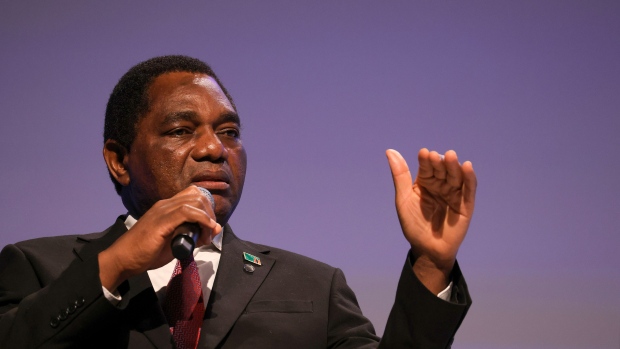Feb 9, 2024
AI-Powered Zambian Copper Mine May Become World’s Third Largest
, Bloomberg News

(Bloomberg) -- Zambia may be home to the world’s third-largest copper mine after a startup backed by billionaire Bill Gates discovered huge deposits of the metal, the country’s president said.
San Francisco Bay Area-based KoBold Metals, which uses artificial intelligence to explore for materials key to the green-energy transition, said this week that its discovery at the Mingomba project far surpasses existing operations in top producer Chile by copper grade.
“It won’t be just the largest mine in Zambia, but it will be one of the largest mines in the world,” President Hakainde Hichilema said Thursday in an interview outside Lusaka, the capital. “Maybe one of the top three largest mines in the world. We believe it will produce well over — when it’s fully operational — 500,000 to 600,000 metric tons.”
Escondida in Chile, the world’s biggest copper mine, produced more than a million metric tons of the metal last year and Grasberg, in Indonesia, the next largest about 770,000 metric tons in 2022.
KoBold President Josh Goldman compared the Zambian mines potential to that of the Kamoa-Kakula, developed by Ivanhoe Mines Ltd. and China’s Zijin Mining Group Co. just across the border in Democratic Republic of Congo. That mine produced almost 400,000 tons of copper last year and at full capacity will be able to produce 620,000 tons annually.
KoBold, whose shareholders include Breakthrough Energy Ventures – backed by Gates and Jeff Bezos – as well as T. Rowe Price Group Inc., Bond Capital, Andreesen Horowitz and Equinor ASA, has been drilling at its Zambian permit for little over a year. Michael Bloomberg, the majority owner of Bloomberg News’s parent Bloomberg LP, is an investor in Breakthrough, according to the company’s website.
The discovery has “huge” implications for Zambia, Hichilema said.
Total production of the metal in Africa’s second biggest copper producer fell to below 700,000 tons last year. A new operation that could nearly double that will provide a boost toward Hichilema’s target of lifting the national output to three million tons by 2031. KoBold, which hasn’t commented on potential production levels, estimates it would cost about $2 billion to build a mine at the Mingomba project.
“When we bring new mines like that it means we are moving toward the three million tons,” Hichilema said.
Other interview highlights:
- Zambia is in a hurry to start a state-owned metal trading company to compete with giants including Glencore Plc and Trafigura Group. The nation used to own a trading company, which it shut down during a privatization of the industry in the 1990s.
- “We shouldn’t have disbanded it, we should have just improved it. That’s what Trafigura does, that’s what Glencore does. Today these two are mega companies. It means there’s value in trading.”
- On Zambia’s debt restructuring delays, Hichilema said Zambia has done it’s part in the process.
- “We as Zambia have fulfilled our obligations for both official creditors and private creditors. We are in a hurry. We’re late.”
- “The delays that are now playing out are beginning to negate the gains we made such as pulling the inflation down. The uncertainties around non-closure leads to pressure on the general price level. The uncertainty that is driven by lack of closure on the debt is creating a push on the exchange rate, putting pressure on the kwacha.”
- “It means we pay more for fuel. This is why we need to get closure, so we can rein in these variables.”
- “We need to continue pushing. We want it resolved like yesterday.”
©2024 Bloomberg L.P.





